Displaying items by tag: Yellowbrick,
ISORA Holyhead – Douglas Race Tracker Live Here!
#ISORA – Race 4 - from Holyhead to Douglas, Isle of Man starts on Friday evening at 1915 hrs and the night race will provide many challenges for the fleet with the decision taken by the Organising Authority to declare the Traffic Separation Scheme (TSS) to the north of Skerries an exclusion zone.
TIME OF START FOR ALL CLASSES
19.10 Warning signal - Class flags (Numerals 1 & 2) hoisted
19.11 Preparatory Signal - Blue Peter hoisted
19.14 Blue Peter down
19.15 Start – Class flags down
The start may be broadcast on VHF Channel 37 (M1)
STARTING LINE
The start line shall be between the end of the Holyhead breakwater and the Clippera Buoy – 0.6 miles off pier head, bearing 067(T).
THE COURSE (approx 60 miles)
Start – Holyhead
Course to be decided
Finish – Douglas IOM
The course is approximately 60 mile long. The course will be posted on the ISORA website, texted and emailed to all entries and shall be available on Thursday morning 21st May. The course shall be broadcast on VHF Channel 37 (M1) before the start.
WAYPOINT MARKS
Waypoints may be used as marks. If so, Rule 28 will be amended accordingly in accordance with the RYA / RORC Guidance – "Racing Around Waypoints" See website for details
Evidence of rounding the "virtual" mark must be taken and may be requested by the Race Officer.
This evidence may include:
Photographic (iPhone or similar) evidence of the yacht's GPS showing its position at the mark.
Yacht's chart plotter track showing the yacht rounding the "virtual" mark. This must be
transmittable to ISORA by email.
The onus of proof of having rounded the WAYPOINT mark will be with each yacht.
Avery Crest YB TRACKER
The first 20 boats entered in the race will be fitted with the Avery Crest YB Tracker. The Skipper will have to sign an indemnity to cover the replacement cost of the unit in a situation that the unit gets lost or damaged.
The units can be collected from Peter Ryan at HSC on Friday evening at 17.30. The trackers will be set up for both races that weekend.
In order to set up the units all boats who are entered must declare that they are racing by 12.00 on Thursday 21st May. This declaration is a text to +353 87 2545037 stating that
"Boat name" will be racing on Saturday. This is critical for the efficient running of the tracking system.
The trackers must be returned to Peter Ryan in NYC immediately after the race on Sunday 24th May.
The tracking can be followed on the YB Tracking app for iPhones and Android. On downloading the app, the "ISORA Avery Crest 2015 Series" is purchased. This will give the purchaser full access to all races in the Series. ISORA will benefit from the sale of this app.
Any queries relating to the Avery Crest Trackers should be dealt with by contacting Peter Ryan +353 87 2545037.
FINISH LINE
Leaving channel mark No1 to Port, the finishing line shall be an extension of the line from the end of the Victoria Pier through the No3 Starboard Buoy to Onchan Head (See Chartlet). Boats approaching the finish shall radio "ISORA Finisher" on VHF Channel 6, 10 min before and then when passing between Green Fairway buoy and Breakwater Red.
The finish time and the time at each mark should be recorded in the log by each boat and text to ISORA at +353 87 2545037 as soon as possible after the race as the mandatory Declaration.
























































